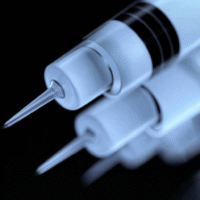Understanding the Study on Sleep Apnea in Children
This study looked at how well a surgery called adenotonsillectomy (AT) works for children with obstructive sleep apnea (OSA), especially those who have issues sleeping on their backs (supine position-related OSA or POSA).
What Did the Study Find?
- Effectiveness of Surgery: The surgery (AT) helped children with OSA, whether or not they had POSA. This means that AT is a good option for treating sleep apnea in kids.
- Changes Over Time: For some children who were just monitored without immediate surgery, their condition changed after 7 months. Half of these children had different results regarding their sleep apnea status.
- Lower Apnea Events: Children with POSA had fewer sleep apnea events compared to those without it, but both groups benefited from the surgery.
What Does This Mean for Patients and Clinics?
For patients, this study shows that surgery can effectively treat sleep apnea, which can lead to better sleep and overall health. For clinics, the findings emphasize the importance of considering surgery as a treatment option for all children with OSA.
Real-World Opportunities
- Doctors can discuss the option of adenotonsillectomy with families of children diagnosed with OSA.
- Clinics can create follow-up plans to monitor changes in sleep apnea symptoms over time.
Measurable Outcomes to Track
- Number of sleep apnea events before and after surgery.
- Changes in sleep quality reported by parents after treatment.
- Any changes in the child’s daytime behavior and energy levels.
AI Tools to Consider
Some clinics may explore AI tools that help monitor sleep patterns or analyze sleep studies more efficiently, making it easier to track improvements in patients over time.
Step-by-Step Plan for Clinics
- Start Small: Begin by educating your staff about the findings of this study.
- Discuss Options: Have conversations with families about the benefits of adenotonsillectomy for children with OSA.
- Implement Monitoring: Set up a system to track the outcomes of children who undergo surgery.
- Evaluate and Adjust: Regularly review the data collected and adjust treatment plans based on what works best.
For more details on this research, you can visit the study link: Study on Sleep Apnea in Children.


























